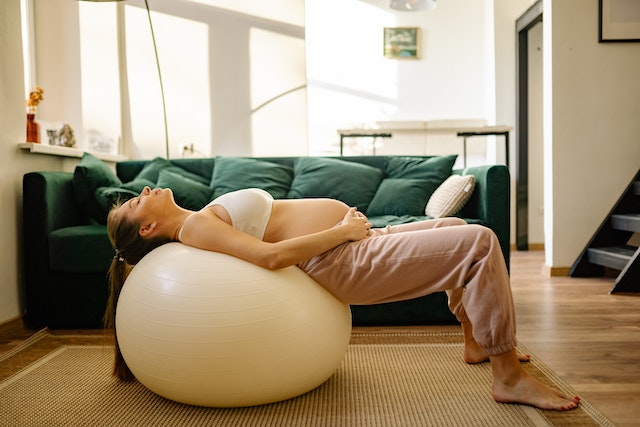The Importance of Stretching Before and After Your Workout
Stretching is often an overlooked aspect of a workout routine, but it plays a crucial role in overall fitness and injury prevention. Proper stretching before and after a workout can help improve flexibility, reduce muscle soreness, and prevent injury. In this article, we will explore the importance of stretching before and after a workout.
 |
| Stretching Before and After Workout |
The Importance of Stretching Before a Workout:
Stretching before a workout is important for a number of reasons. Firstly, it helps to warm up the body and prepare the muscles for the workout ahead. This can help to prevent injury and improve performance during the workout. Additionally, stretching can help to increase flexibility, which can improve range of motion and make it easier to perform certain exercises.
Read more about: Building Muscles Tips and Tricks
Types of Stretching:
There are two main types of stretching: dynamic and static stretching. Dynamic stretching involves moving the body through a range of motion to warm up the muscles and prepare them for exercise. This can include exercises like walking lunges, high knees, and arm circles. Static stretching, on the other hand, involves holding a stretch for a period of time to improve flexibility and range of motion. Examples of static stretches include hamstring stretches, quad stretches, and shoulder stretches.
You may want to read about: Regular Exercise and Physical Activity Benefits
 |
| Types of Stretches |
The Benefits of Stretching Before a Workout:
Stretching before a workout can provide a number of benefits, including:
- Improved flexibility and range of motion
- Reduced risk of injury
- Improved athletic performance
- Reduced muscle soreness
The Importance of Stretching After a Workout:
Stretching after a workout is just as important as stretching before a workout. After exercise, the muscles are warm and more pliable, making it easier to improve flexibility and range of motion. Additionally, stretching after a workout can help to reduce muscle soreness and prevent injury.
The Benefits of Stretching After a Workout:
Stretching after a workout can provide a number of benefits, including:
- Improved flexibility and range of motion
- Reduced muscle soreness and stiffness
- Improved circulation and nutrient delivery to muscles
- Improved recovery time
Types of Stretches After a Workout:
 |
| Hamstring Stretches |
After a workout, it is best to focus on static stretching to help improve flexibility and range of motion. Examples of stretches that can be done after a workout include hamstring stretches, quad stretches, and hip stretches. It is also important to stretch any areas of the body that were specifically targeted during the workout.
You may also like: Easy Home Workouts for Busy People
 |
| Types of Stretching |
Do stretches burn calories
Stretching itself is not a significant calorie-burning activity. It is considered a low-intensity exercise and doesn't typically elevate the heart rate enough to burn a significant number of calories. However, stretching can be beneficial for weight loss indirectly. By helping to improve flexibility and mobility, stretching can make other forms of exercise more effective, which can lead to increased calorie burn and weight loss. Additionally, stretching can help prevent injury, which can keep you active and able to exercise regularly, leading to better weight management overall.
 |
| Stretching and Calories |
Amazing fact about cats stretching
An amazing fact about cats stretching is that they have a unique stretching technique called "pandiculation." This involves a combination of stretching and contracting muscles in a coordinated manner, which allows cats to warm up and release tension in their muscles. This technique is not commonly seen in other animals, making it a unique and fascinating aspect of feline behavior.
 |
| Cats Stretching |
Can pregnant women do stretches?
Yes, pregnant women can perform certain stretches that are safe and beneficial during pregnancy. However, it is important for pregnant women to consult with their healthcare provider before starting any new exercise or stretching routine. They may also want to work with a certified prenatal fitness instructor to ensure that they are performing the stretches correctly and safely. Additionally, pregnant women should avoid certain types of stretches that could put them at risk of injury or harm to the baby, such as stretches that involve lying on the stomach or overstretching the abdominal muscles.
 |
| Stretches for Pregnant |
Conclusion:
Stretching is an important part of any workout routine, and it should not be overlooked. By incorporating stretching into your pre- and post-workout routine, you can improve flexibility, reduce muscle soreness, and prevent injury. Remember to always warm up before stretching, and to hold each stretch for at least 20-30 seconds for maximum benefit.